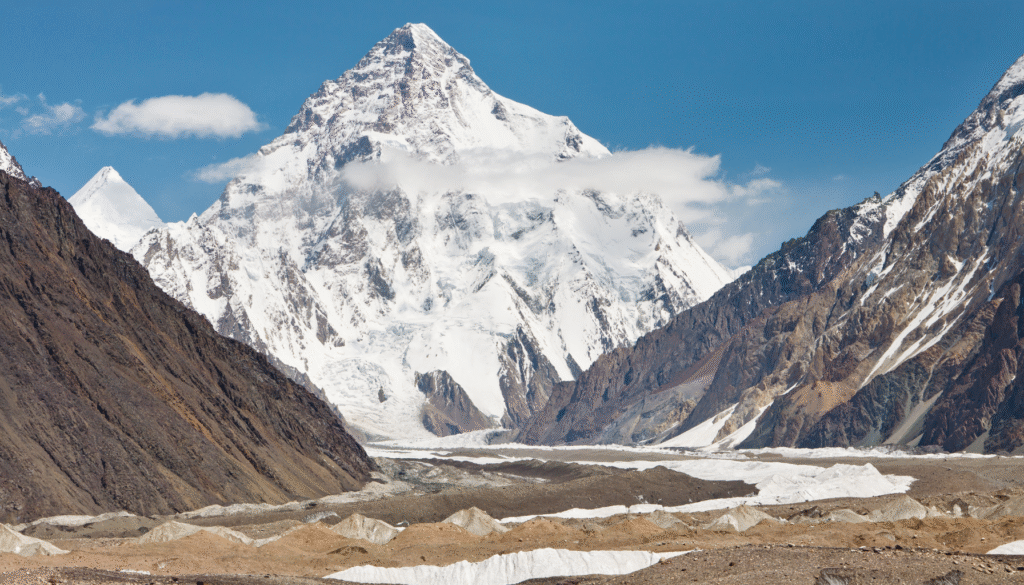Have you ever wondered where the highest points on Earth are? While Mount Everest may be the first name that comes to mind, our planet is home to many towering natural wonders that reach breathtaking altitudes.
These incredible locations aren’t just geographical records — they influence climate, house unique ecosystems, and hold deep cultural significance for the people who live near them.
In this article, you’ll discover:
✅ The highest places on Earth
✅ Fascinating facts about these majestic peaks and plateaus
✅ How they impact the planet and why they matter
Let’s explore the world from above!
🏔️ 1. Mount Everest (Nepal/China) – 8,848.86 meters (29,031.7 feet)
The tallest mountain in the world above sea level, Mount Everest sits on the border of Nepal and the Tibet Autonomous Region of China. It’s part of the mighty Himalayan mountain range.
Interesting facts:
- First summited in 1953 by Sir Edmund Hillary and Tenzing Norgay
- Air pressure at the summit is only about one-third of what we experience at sea level
- Considered sacred by the local Sherpa community
🏔️ 2. K2 (Pakistan/China) – 8,611 meters (28,251 feet)
Known as the “Savage Mountain,” K2 is the second-highest mountain on Earth and arguably the most dangerous to climb. It’s located in the Karakoram range.
Interesting facts:
- Has one of the highest fatality rates among climbers
- Considered technically more difficult than Everest
- Far fewer people have reached the summit of K2 compared to Everest
🏔️ 3. Kangchenjunga (Nepal/India) – 8,586 meters (28,169 feet)
The third-highest mountain in the world, Kangchenjunga lies along the border of Nepal and India. Its name means “The Five Treasures of Snow” due to its five distinct peaks.
Interesting facts:
- Held sacred by many local communities
- Some climbers stop just before the summit out of respect for cultural beliefs
🏔️ 4. Lhotse (Nepal/China) – 8,516 meters (27,940 feet)
Sharing much of its climbing route with Mount Everest, Lhotse is known for its steep walls and close proximity to its famous neighbor.
Interesting facts:
- Name means “South Peak” in Tibetan
- Popular among experienced climbers aiming to tackle Everest too
🏔️ 5. Makalu (Nepal/China) – 8,485 meters (27,838 feet)
Just 19 km from Everest, Makalu is famous for its pyramid-shaped peak and technical challenges.
Interesting facts:
- Known for its sharp ridges and isolated position
- Considered one of the most difficult mountains to climb
🌋 Bonus Height Fact: Chimborazo (Ecuador) – 6,263 meters (20,548 feet)
While it’s not the tallest above sea level, Chimborazo is the farthest point from Earth’s center due to the planet’s equatorial bulge.
That’s right — thanks to Earth’s shape, this Ecuadorian volcano beats Everest in terms of distance from the core.
🏞️ The Tibetan Plateau – Average elevation: 4,500 meters (14,764 feet)
Nicknamed the “Roof of the World,” the Tibetan Plateau is the world’s highest and largest plateau.
Why it matters:
- Influences weather and monsoon patterns across Asia
- Source of major rivers like the Yangtze and the Ganges
- Home to ancient cultures and Tibetan spiritual traditions
🏔️ Aconcagua (Argentina) – 6,961 meters (22,838 feet)
The highest mountain outside of Asia and the tallest peak in the Western Hemisphere, Aconcagua lies in the Andes mountain range.
Interesting facts:
- Highest point in South America
- Part of the “Seven Summits” — the highest peaks on each continent
🌎 Why Do These High Places Matter?
Beyond their stunning beauty, these towering locations:
- Affect the global climate
- Act as water reservoirs via glaciers and snowmelt
- Host rare ecosystems and wildlife
- Serve as natural landmarks and spiritual icons
- Push the limits of human endurance and exploration
The highest places on Earth are more than just measurements — they’re powerful reminders of nature’s scale and wonder.
Whether it’s the sacred peaks of the Himalayas or the expansive Tibetan Plateau, each location teaches us something about resilience, survival, and the awe-inspiring diversity of our planet.
Even if you never set foot on these altitudes, knowing about them can shift your perspective — quite literally — to new heights.



